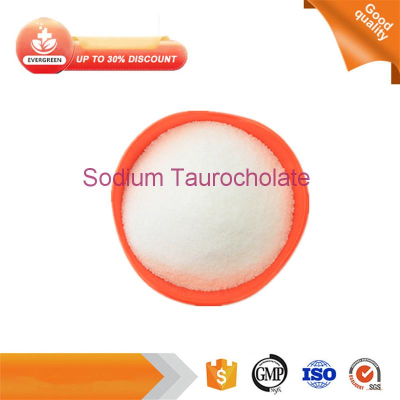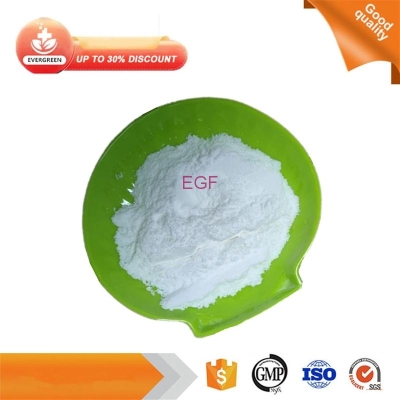-
Categories
-
Pharmaceutical Intermediates
-
Active Pharmaceutical Ingredients
-
Food Additives
- Industrial Coatings
- Agrochemicals
- Dyes and Pigments
- Surfactant
- Flavors and Fragrances
- Chemical Reagents
- Catalyst and Auxiliary
- Natural Products
- Inorganic Chemistry
-
Organic Chemistry
-
Biochemical Engineering
- Analytical Chemistry
- Cosmetic Ingredient
-
Pharmaceutical Intermediates
Promotion
ECHEMI Mall
Wholesale
Weekly Price
Exhibition
News
-
Trade Service
iNature's extensive genetic and phenotypic variation not only exists between tumors of different patients (intertumor heterogeneity), but also exists within a single tumor (intratumor heterogeneity).
Tumor heterogeneity leads to the diversity of cancer signaling pathways and drives phenotypic variation, which poses a major challenge to personalized cancer medicine.
The molecular heterogeneity of hepatobiliary tumors (including inter-tumor and intra-tumor differences) always leads to drug resistance.
On March 23, 2021, Wang Hongyang and Chen Lei of Naval Medical University and Gao Dong from the Center for Excellence in Molecular Cell Science of the Chinese Academy of Sciences published an online communication titled "Single-Cell Transcriptome Analysis Uncovers Intratumoral Heterogeneity and Underlying Mechanisms" in Advanced Science (IF=16) For Drug Resistance in Hepatobiliary Tumor Organoids" research paper, the research produced seven hepatobiliary tumor organoids to explore heterogeneity and evolution through single-cell RNA sequencing.
The study found that HCC272, which has an epithelial-mesenchymal transition state, is proven to have broad-spectrum drug resistance.
By examining the expression patterns of cancer stem cell markers (such as PROM1, CD44 and EPCAM), it was found that the CD44-positive population may develop drug resistance in HCC272.
UMAP and pseudo-time analysis determined the intratumoral heterogeneity and unique evolutionary trajectory.
Among them, CTNNB1, glyceraldehyde 3-phosphate dehydrogenase (GAPDH) and NEAT1 dominant expression clusters are common transhepatobiliary organs.
CellphoneDB analysis further suggests that the metabolically dominant organoids with hypoxic signal enrichment can up-regulate the expression of NEAT1 in the CD44 subgroup and mediate drug resistance that depends on the Jak-STAT pathway.
In addition, the metabolic dominance clusters shared in multiple organoids have similar characteristic genes (GAPDH, NDRG1, ALDOA, and CA9).
The combination of GAPDH and NDRG1 is an independent risk factor and a predictor of patient survival.
All in all, the research in this article provides important insights into the heterogeneity of hepatobiliary tumors, especially the diversity of CSC distribution and the complexity of cell evolutionary trajectories.
At the same time, the study revealed that the CD44-positive subgroup induces drug resistance through excessive activation of the Jak-STAT signaling pathway, which is induced by NEAT1 that is up-regulated during hypoxia.
Further studies with larger sample sizes should be ensured to better clarify the relationship between tumor heterogeneity and adverse clinical features after resection or drug treatment.
In addition, on February 15, 2021, Wang Hongyang of Naval Military Medical University, Hou Jinlin of Southern Medical University and other joint communications published online in Cell Research titled "Genome-scale profiling of circulating cell-free DNA signatures for early detection of hepatocellular carcinoma in cirrhotic patients" Based on the unique genomic characteristics of cfDNA, this research conducted a large-scale, multi-center study, and developed a novel comprehensive method for HCC diagnosis, which strengthened HIFI (5-hydroxymethylcytosine/motIf The /fragmentation/nucleosomal footprInt) method has great potential as a new strategy for early diagnosis and monitoring of HCC.
The HIFI method meets the urgent need to identify early HCC that can be used for treatment.
In general, considering its high accuracy, non-invasiveness and versatility, the HIFI method has great potential for public health screening in high-risk populations, especially when there is no equipment and infrastructure required for HCC imaging screening.
Case (click to read).
On February 3, 2021, more than 40 units including Peking University, Naval Military Medical University, Capital Medical University, etc.
joined forces, Zhang Zemin, Zhou Penghui, Jiang Qinghua, Huang Zhiwei, Bei Jinxin, Bian Xiuwu, Liu Xindong, Cheng Tao, Zhao Pingsen, Wang Fusheng, Su Bing , Wang Hongyang, Zhang Zheng, Qu Kun, Wang Xiaoqun, Chen Jiekai, Jin Ronghua and other joint communications published a research paper entitled "COVID-19 immune features revealed by a large-scale single cell transcriptome atlas" online in Cell.
Single-cell RNA sequencing was applied to 284 samples of COVID-19 patients and controls, and a comprehensive immune environment with 1.
46 million cells was created.
Large data sets can determine that changes in different peripheral immune subtypes are related to different clinical characteristics such as age, sex, severity, and disease stage of COVID-19.
SARS-CoV-2 RNAs exist in a variety of epithelial and immune cell types, and are accompanied by significant changes in the transcriptome of virus-positive cells.
The systemic up-regulation of S100A8/A9 is mainly caused by megakaryocytes and monocytes in peripheral blood, which may lead to cytokine storms frequently observed in critically ill patients.
The research data provides a wealth of resources for understanding the pathogenesis of COVID-19 and formulating effective treatment strategies (click to read).
Extensive genetic and phenotypic variations not only exist between tumors of different patients (intertumor heterogeneity), but also exist within a single tumor (intratumoral heterogeneity).
Tumor heterogeneity leads to the diversity of cancer signaling pathways and drives phenotypic variation, which poses a major challenge to personalized cancer medicine.
Transcriptome diversity and cancer stem cell (CSCs) plasticity are important reasons for cancer heterogeneity, which can produce a variety of cell populations that can be selected in a given microenvironment.
The development of high-throughput sequencing technology at the single-cell level has accelerated the understanding of human tumor-driven gene mutations, abnormal regulatory procedures, and molecular subtypes.
However, most of the existing researches rely on profiling techniques that can measure tumors in batches, which are not enough to explore and explain tumor heterogeneity and evolution on an overall scale.
The latest advances in single-cell technology provide a way to explore the characteristics of the genome, transcriptome and epigenome at the single-cell level.
In the past few years, single-cell RNA sequencing (scRNA-seq) has been used to map many parenchymal and non-parenchymal cells to redefine the composition of cell types and discover new subsets of physiological and pathological conditions.
In addition, some studies have revealed new insights into the evolution and diversity of many human solid tumors including human intracranial tumors, head and neck cancer, breast cancer and lung cancer through scRNA-seq.
At present, studies on the hepatobiliary system have been reported one after another, but the intrinsic link between the heterogeneity of hepatobiliary tumors and drug response is still unclear.
Precision Oncology is committed to the development of more physiological human cancer models.
Emerging organoid technology allows long-term culture of patient-derived cancer cells in vitro to faithfully summarize the in vivo phenotype.
Organoids are derived from pluripotent stem cells or isolated organ progenitor cells, and they differentiate to form organ-like cell tissues and exhibit a variety of cell types.
Recently, organoids have been used to simulate various cancers, including prostate cancer, pancreatic cancer, breast cancer, liver cancer, bladder cancer, etc.
, and promote a wide description of intratumoral phenotype and molecular heterogeneity.
Organoids derived from tumors have become powerful tools for tumor biology, stem cell biology, and drug discovery research.
Due to the huge heterogeneity, it is a huge challenge to establish a research model that can truthfully summarize the in vivo phenotype and further study the heterogeneity and drug resistance of hepatobiliary tumors.
Here, the study established patient-derived hepatobiliary organoids from 7 patients, and used scRNA-seq to analyze inter-tumor and intra-tumor heterogeneity, which revealed that its transcriptional program expression is related to the cell cycle and hypoxia.
Intrinsic variables related to epithelial status.
In addition, the study found that the heterogeneity of CSC may contribute to the molecular and biological diversity in the tumor ecosystem, and therefore cause drug reactions.
In addition, the study showed a unique metabolic pathway in the drug-resistant subgroup, which may be crucial for drug resistance.
These data reveal new insights into the tumor heterogeneity of hepatobiliary tumor organoids and related key subgroups in regulating tumor drug resistance.
Reference message: https://onlinelibrary.
wiley.
com/doi/10.
1002/advs.
202003897







